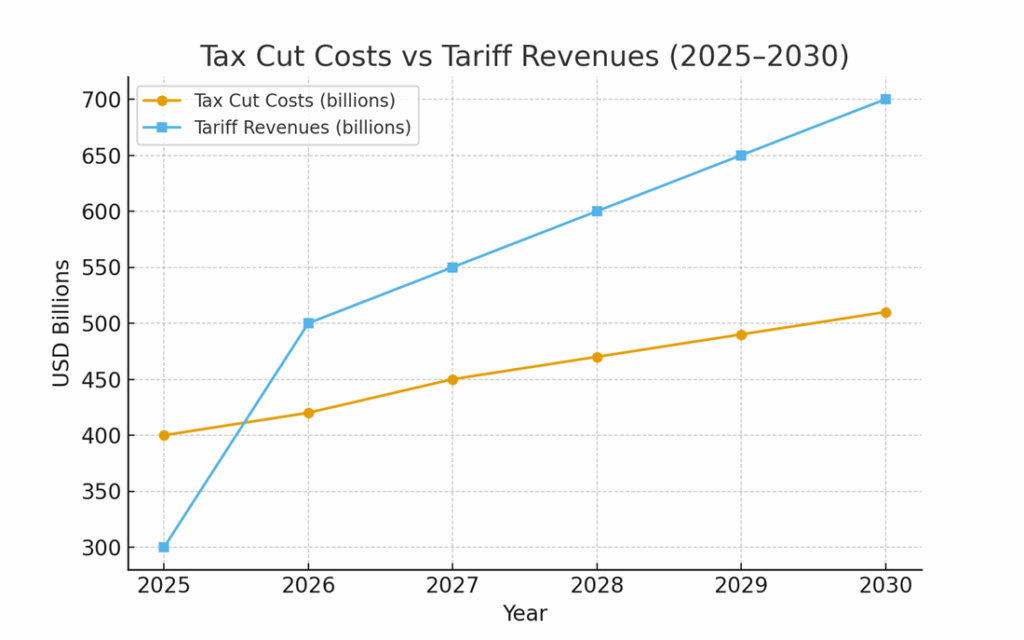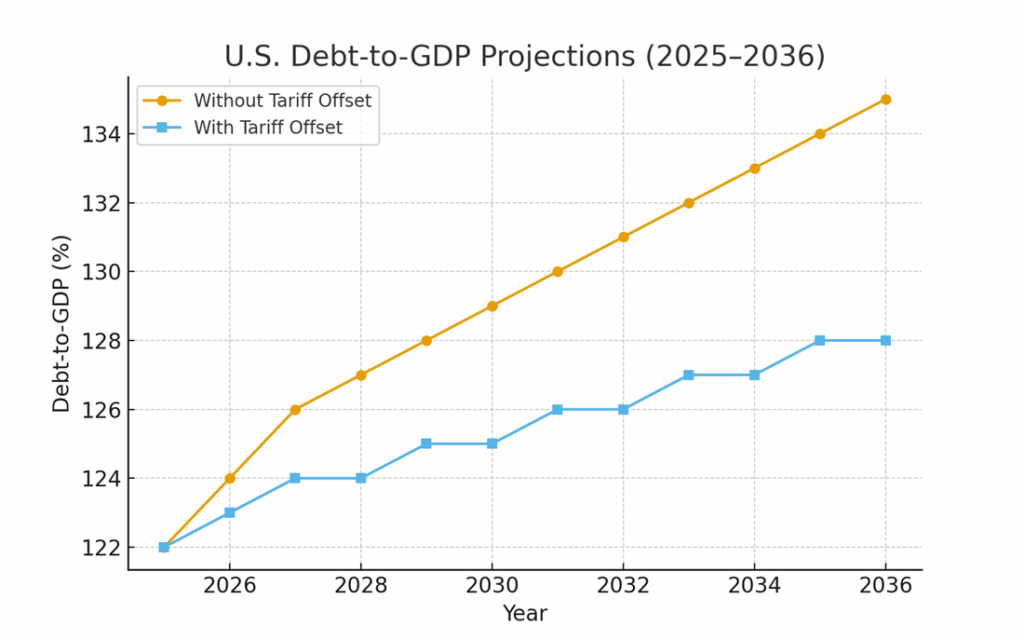By Chris Combs
Silicon Valley Capital Partners
Introduction
In an era when U.S. fiscal policy is often characterized by widening deficits and mounting debt, a surprising development has emerged. The federal government’s aggressive use of tariffs—once seen primarily as a trade tool—is now delivering a major fiscal dividend. At the same time that recent tax cuts have reduced federal revenues, tariff collections have surged, providing a new stream of income that is reshaping how America manages its budget. This dynamic has created the possibility of a policy-neutral outcome, where tariff inflows offset the revenue loss from tax cuts, effectively shifting part of the nation’s tax collection burden onto foreign exporters and their global supply chains.
Executive Summary
Recent U.S. tariff revenues are emerging as a counterweight to the latest round of tax cuts, creating the possibility of a policy-neutral fiscal outcome. Instead of ballooning the deficit, tariff collections are on track to offset much of the revenue lost to tax reductions.
– The Congressional Budget Office (CBO) estimates tariffs could reduce the U.S. deficit by $4 trillion over the next decade, including $700 billion in interest savings (Reuters, Aug. 21, 2025).
– Treasury Secretary Scott Bessent has projected annual tariff revenues could surpass $500 billion, potentially approaching $1 trillion (Reuters, Aug. 26, 2025).
– In July 2025 alone, customs duty collections reached nearly $30 billion, a 242% year-over-year increase (Reuters, Aug. 12, 2025).
Tariffs as a Fiscal Counterbalance
The federal government’s recent tax cuts—part of the ‘One Big Beautiful Bill Act’—reduced domestic revenue intake. Normally, this would have added trillions to the national deficit. Instead, rising tariff collections are filling much of the fiscal gap.
Chart 1: Tax Cut Costs vs. Tariff Revenues (2025–2030)

Source: CBO projections; Reuters (Aug. 21 & 26, 2025).
Ratings Agencies Acknowledge the Offset
Credit rating agencies have adjusted their outlooks to reflect this revenue surge. S&P Global Ratings reaffirmed the U.S. AA+ with a stable outlook, citing meaningful tariff revenue as a factor offsetting weaker fiscal results from tax cuts and new spending. Fitch Ratings likewise reaffirmed its AA+ rating, calling tariff revenue a stabilizing force but warning that debt-to-GDP could still rise to 127% by 2027 without broader reforms.
Chart 2: Debt-to-GDP Projections With and Without Tariff Offsets (2025–2036)

Source: CBO; Fitch Ratings; S&P Global; Reuters (Aug. 27, 2025).
Conclusion: A Policy-Neutral Framework
What began as a trade policy is now functioning as a fiscal tool. By offsetting tax cuts with tariff revenues, the U.S. has created a near policy-neutral framework—one in which Americans enjoy tax relief while foreign exporters and global markets share in funding U.S. federal obligations. For now, ratings agencies are cautiously supportive. The key question is sustainability: can tariff inflows remain strong without curbing growth and trade, or is this merely a short-term patch on America’s deeper debt challenges?
